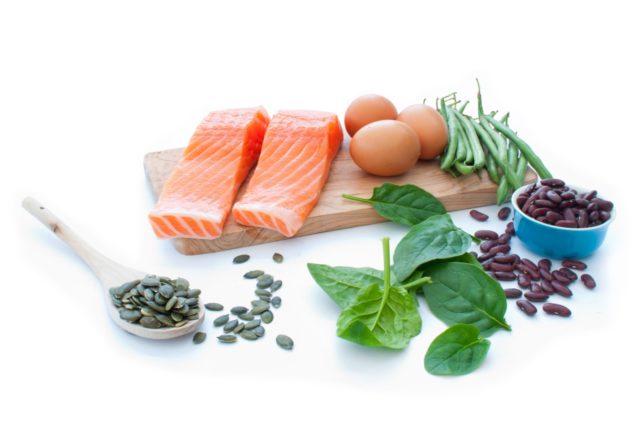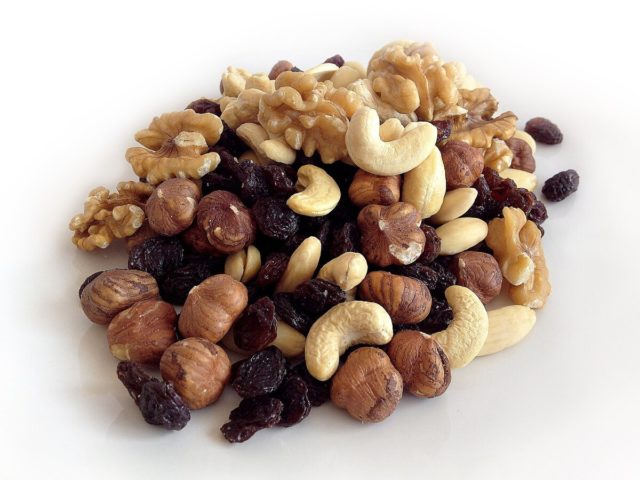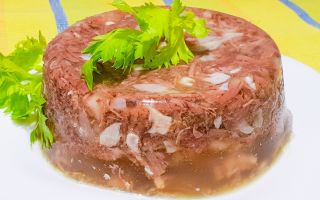Content
Foods rich in glycine can be found on every table. Those who carefully monitor their health and diet know which foods contain it and in what quantity. In this way, you can make up for its lack in the body.
What is glycine in food
Glycine is classified as the simplest aliphatic amino acid. It is found in many proteins as well as some biological compounds. Normally, it is produced in the body on its own, but if this process is disturbed, a person experiences a lack of it. This can be expressed in poor physical and mental well-being.

Glycine is needed by the body in a certain amount every day as it is the basis for building protein. In addition, the amino acid participates in the formation of many hormones, regulates metabolic processes in the body, and has a positive effect on the functioning of the nervous system. An important function of a substance is the ability to influence the functioning of the brain, in this regard, preparations with glycine and products containing it are recommended for those whose work is related to mental activity.
This is the only amino acid that does not contain optical isomers and is not considered essential, since it can be produced by the body on its own. This also means that it cannot contain toxic components and is safe for humans. Of course, this applies to acceptable doses.
Glycine is formed by the interaction of water with proteins, as well as through chemical synthesis. It is a kind of light odorless powder with a faint sweet taste. In the food industry, it is used to improve the taste of the product; on the labels it is designated as E640.
The benefits of glycine-rich foods
Glycine is essential for the proper functioning of receptors that transmit inhibitory signals to neurons. It reduces emotional and mental stress, promotes active work of the brain. In addition, its positive effect on muscle tone, sleep rhythm, and metabolic processes in the body was noted. It is also able to reduce the negative effects of alcohol. Foods containing large amounts of glycine help to cope with stress overload, disturbances in the functioning of the central nervous system, cardiac and vascular pathologies.
Once in the human body, glycine in the process of metabolic reactions breaks down into water and carbon dioxide, without accumulating in the body. Thus, in order for the level of the amino acid to be normal, foods with its content must be consumed daily. Experts have found that the body is able to assimilate it to the extent that it lacks.

Other equally important properties of the substance include:
- slowing down the aging of muscle tissue;
- participation in the synthesis of RNA and DNA;
- reducing the need for overeating;
- significant reduction in anxiety;
- stimulation of the body's defenses;
- an increase in general tone;
- neutralization of toxins;
- restoration of damaged tissues.
However, more substance is required to increase mental activity, relieve mental stress, get rid of alcohol addiction.
The harm of foods containing glycine
Glycine does not belong to toxic substances, for this reason it cannot cause significant harm to the body, like the food where it is contained. The harm that food products containing amino acids can do is that many of them cause allergies and are undesirable in some diseases of the digestive tract. In addition, individual intolerance to the amino acid is not excluded.
What foods contain glycine
A large amount of glycine is found in protein products, for example, in the liver and meat of animals. It is especially abundant in connective tissue, bones, cartilage, ligaments and skin, in chicken and quail eggs, liver of some fish varieties, and cottage cheese. Of the plant foods, nuts, seeds, and oatmeal are the richest in glycine. Foods with gelatin contain a lot of amino acids. The main food sources are as follows:
- milk products;
- meat and liver;
- a fish;
- eggs (especially quail);
- fatty cheeses;
- legumes;
- pumpkin;
- white cabbage and cauliflower;
- spinach;
- kiwi and bananas.
Also, a lot of amino acids are found in jellied meat, saturated broths, walnuts, pine nuts, peanuts and pistachios. It is worth noting fennel, sesame seeds, basil and ginger, in which the content of the substance is slightly lower than in animal products.
Glycine has proven itself well in cosmetology. It has long been known as a beauty stimulant. Eating products with its content improves the structure of nails, hair, and also significantly increases the elasticity of the skin.
Contraindications to products with glycine

Glycine found in food has no contraindications and is safe in most cases. However, you should not deliberately consume foods containing it in large quantities. The diet should be as balanced as possible. Contraindications may be solely food-related, not amino acid-related.
Glycine Rich Table
List of foods high in the amino acid glycine:
|
Products |
Content per 100 g |
|
Rabbit |
1,79 |
|
Goose |
1,63 |
|
Beef tongue |
1,05 |
|
Turkey |
1,14 |
|
Hen |
1,35 |
|
Chicken liver |
1,07 |
|
Soy |
1,42 |
|
Lentils |
1,03 |
|
Beans |
0,91 |
|
Oats |
0,41 |
|
Peanut |
1,52 |
|
Almond |
1,07 |
|
Cheese |
0,51 |
|
Cottage cheese |
0,26 |
|
Spinach |
0,11 |
|
Kiwi |
0,06 |
|
Persimmon |
0,04 |
Rules for the use of products with glycine

The human body needs daily in different vitamins, macro and microelements and a variety of amino acids, so you should not try to consume only those foods that contain glycine. The diet should be as varied as possible.
The daily requirement for this amino acid is no more than 0.3 g for an adult. The need for it can increase to 0.6 g in some conditions:
- pathologies of the central nervous system;
- drug or alcohol intoxication;
- prolonged emotional, mental overload;
- brain trauma;
- strokes and heart attacks;
- mental stress;
- trouble sleeping.
You should limit the use of foods containing glycine with signs of individual intolerance, low blood pressure, during pregnancy and lactation.
There are some signs by which one can judge about the lack of amino acids in the body. These include depression, sleep disturbance, asthenia, limb tremor, nervous irritability.By excessive heartbeat, redness of the skin, allergies, hyperactivity, it can be concluded that there is an excess of glycine in the body.
The amino acid is very beneficial for athletes. It is required to prepare for the competition, since it relieves muscle and psycho-emotional tension, helps to concentrate, and increases motivation.
Useful Tips
When trying to eat foods containing this substance, you should know that certain rules must be followed for proper assimilation. First of all, you need to adhere to a healthy lifestyle and a balanced diet. The correct drinking regime and an active lifestyle are important. You also need daily walks in the fresh air and physical activity as far as possible. Without these conditions, the correct assimilation of the amino acid in the body is impossible.
Conclusion
Foods rich in glycine are easy to obtain from foods that are on the table of every family every day. To fully assimilate the amino acid, you should lead a healthy lifestyle and adhere to a diet. This will allow glycine to enter the body daily with food and avoid additional use in the form of tablets, especially since their benefits have not been proven to date.

